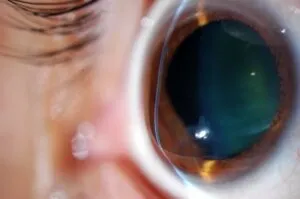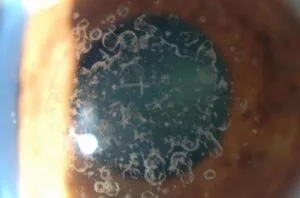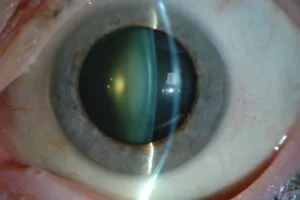Diagnostic tests
Corneal topography

What is corneal topography?
Corneal topography is a diagnostic technique that allows us to study the structural features of the cornea (the outermost and transparent layer of the eye), providing information on its shape, curvature and thickness.
To do so, we use equipment called a topographer, which projects light. Using a camera connected to a computer, the topographer instantly captures the way in which this light is reflected on the cornea and creates different types of maps that describe the eye surface and its topography. The warm colours on the map (red) represent the most curved, raised and thin areas of the cornea, as opposed to the cool shades (blue). Thus, we can compare the values obtained with the usual corneal patterns to detect any alteration.
What do we use corneal topography for?
Corneal topography not only allows us to diagnose and monitor different diseases affecting the cornea, but it is also very useful as a preoperative and control test, when performing surgeries on the anterior segment of the eye. Another important use is the adaptation of contact lenses in special cases, ase we need a good preliminary study to ensure that the lenses adapt perfectly to the eye surface, e.g. if you have an irregular or deformed cornea.
How do we perform corneal topography?
- If you are a contact lens user, it is advisable not to wear them 7 to 15 days prior to the surgery, as indicated by your ophthalmologist, to avoid alterations in the values obtained.
- No pupil dilation is required beforehand, so you will not see blurry after the test.
- To perform a corneal topography, we spend about 5 minutes per eye.
- It is completely painless, as it does not involve direct contact with the eye surface.
- At the Miranza clinics, we have several types of cutting-edge topographers.



